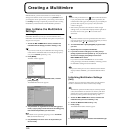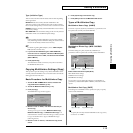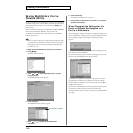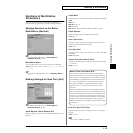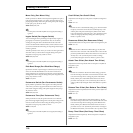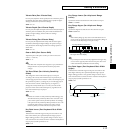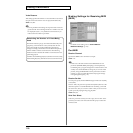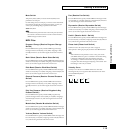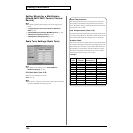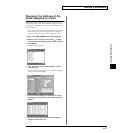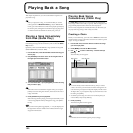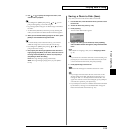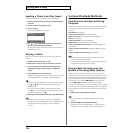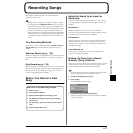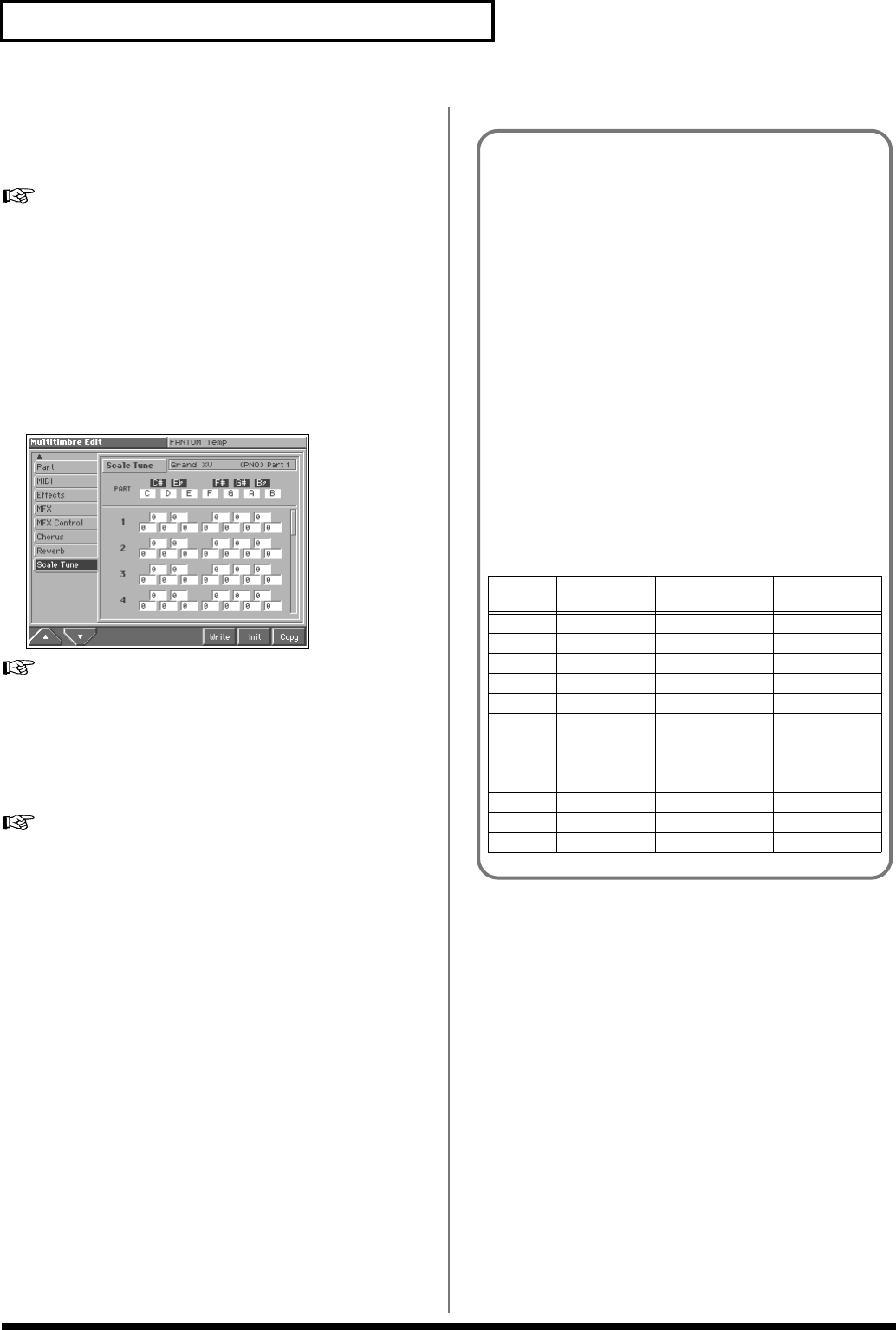
120
Creating a Multitimbre
Setting Effects for a Multitimbre
(Effects/MFX/MFX Control/Chorus/
Reverb)
For details regarding effect settings, refer to the pages shown
below.
• “Applying Effects in Performance Mode or Multitimbre
Mode” (p. 170)
• “Making Multi-Effects Settings (MFX/MFX Control)” (p. 174)
• “Making Chorus Settings (Chorus)” (p. 176)
• “Making Reverb Settings (Reverb)” (p. 177)
Scale Tune Settings (Scale Tune)
fig.08-11_50
For details on the setting, refer to “How to Make the
Multitimbre Settings” (p. 112).
C–B (Part Scale Tune C–B)
Make scale tune settings for each part.
Value: -64– +63
Scale Tune is switched on/off by means of the Scale Tune Switch
parameter (SYSTEM/Scale Tune) (p. 186).
Equal Temperament
This tuning divides the octave into 12 equal parts, and is the
most widely used method of temperament used in Western
music. The Fantom employs equal temperament when the Scale
Tune Switch is set to “OFF.”
Just Temperament (Tonic of C)
Compared with equal temperament, the principle triads sound
pure in this tuning. However, this effect is achieved only in one
key, and the triads will become ambiguous if you transpose.
Arabian Scale
In this scale, E and B are a quarter note lower and C#, F# and G#
are a quarter-note higher compared to equal temperament. The
intervals between G and B, C and E, F and G#, Bb and C#, and
Eb and F# have a natural third—the interval between a major
third and a minor third. On the Fantom, you can use Arabian
temperament in the three keys of G, C and F.
<Example>
Note
name
Equal tem-
perament
Just Tempera-
ment (tonic C)
Arabian Scale
C 0 0 -6
C# 0 -8 +45
D 0 +4 -2
Eb 0 +16 -12
E 0 -14 -51
F 0 -2 -8
F# 0 -10 +43
G 0 +2 -4
G# 0 +14 +47
A 0 -16 0
Bb 0 +14 -10
B 0 -12 -49



